News of the big catch spread like wildfire across the West. Henry’s Lake, a shallow impoundment in eastern Idaho, nestled up against the Montana border, gave up another legit trophy – a 36-inch rainbow-cutthroat trout hybrid.
On Oct. 4, Rigby, Idaho, angler Hailey Thomas nabbed the monster trout while fishing the renowned trophy-producing lake with her husband and her two kids. According to local news reports, the water was a bit off-color and the fishing had been slow. Just as her husband, Shane Thomas, lifted the anchor to move to a new location, the monster trout came calling. The fish exceeded the Idaho hybrid trout record by a full six inches, and the fish’s girth was more than 21 inches.
A beast to be sure, and good for Hailey – it’s a lifetime catch that few others will experience.
Unfortunately, Henry’s Lake may not be the place to enjoy such fishing years from now. Just three days after Hailey boated her trophy, the Idaho Department of Health and Welfare issued a familiar warning to anglers and boaters who use Henry’s Lake for recreation – the lake was in the midst of a toxic blue-green algal bloom, and state health officials warned against even touching the high-elevation lake’s waters.
According to a news release from the state DEQ, water samples collected from the shoreline of Henry’s Lake showed the presence of the cyanobacteria species Microcystis, Dolichospermum, and Aphanizomenon. All three bacteria can produce dangerous toxins that can be harmful to people, pets and livestock, and the DEQ warned that those with liver or kidney damage are at an increased risk of illness.
This being Idaho, a politically blood-red state where everything from science to election results are regularly called into question, there was no mention from the state DEQ about the cause of the algal outbreak, other than these species of blue-green algae “are a natural part of Idaho’s water bodies” that can bloom to dangerous levels when the weather and the water temperatures warm up. The cause of the warm-up? No mention in the state’s health warning, other than the seemingly innocuous increase in water temperatures.
Unfortunately, this is nothing new for Henry’s Lake. It’s a shallow impoundment and has prolific weed beds that provide cover for giant trout and great habitat for obnoxiously abundant aquatic insects. It does warm up under the summer sun – no doubt about it. The lake has been subjected to documented blue-green algae outbreaks each summer and fall since at least 2017. And it’s not alone. Many of Idaho’s famed reservoirs have endured such algal blooms, including Cascade Reservoir, a popular fishery near McCall in western Idaho.

But, for the last two years, the bloom has spread to Island Park Reservoir, an irrigation impoundment on the Henry’s Fork near the top of the river’s drainage (Henry’s Lake is not directly on the Henry’s Fork). This is remarkable because Island Park Reservoir is big – at full pool, it covers 8,400 acres of high-elevation real estate.
But it’s not exactly a surprise, at least to scientists who are predicting more of the same as the climate continues to warm and water temperatures, even in reservoirs that sit at 6,500 feet in elevation, continue to rise. It also might be one of the first signs that climate change is impacting the West’s waters to the point where even taking a dip can be bad for human health. Although there’s no mention of climate change in the Idaho DEQ health advisory, it doesn’t take much to make the connection between the algal blooms and a warming climate.
Over the last two decades, water temperature advisories have become the norm on trout streams across the West. Documented trout and whitefish die-offs due to either warm water or bacterial and algal blooms as a result of warm water have persisted for years now.
But now we’re talking human health. And we’re talking about lakes that have serious economic benefits for communities, like Island Park Reservoir, which is very popular among boaters, jet-skiers, swimmers and anglers. Blue-green algae blooms are no longer isolated incidents in the Rockies – they are, predictably, accompanying water temperature spikes that are enhanced by climate change and the resulting droughts.
As of this writing, Island Park Reservoir is less than half full, and was a full 4,000 acre feet lower a week ago. Other area reservoirs are parched, as well. Palisades Reservoir on the nearby South Fork is only 6 percent full as of this writing – it’s actually dropped 1,000 acre feet over the last week. The upper end of the reservoir is completely dry, leaving important migratory tributaries for fall-run brown trout exposed to predators like pelicans and raptors. This lake, too, is important to recreation community in eastern Idaho and western Wyoming. Thankfully, there haven’t been any DEQ water quality warnings for Palisades. Yet.
Sometimes, in order for problems to be completely understood, the impact has to be felt by more than just a single user group. As anglers, we’ve come to understand climate change and what is happening to our rivers, lakes and streams because we’re directly impacted. Now that the blue-green algae blooms are beginning to spread to lakes and reservoirs where more and more people come into direct contact with water, others may begin to understand the serious challenge posed to the West from a warming climate.
In the case of Henry’s Lake and Island Park Reservoir, the impacts could be wide-spread. There are thousands of lakeside cabins and second homes along the shores of both lakes – they are tourist destinations for visitors who come to the area–it’s close to Yellowstone National Park and the fishing, ATV riding, Nordic skiing and snowmobile riding are legendary. But, if you’re a summer visitor to Henry’s Lake, and you’re not sure if you can even touch the water, does that change the appeal? You bet.
It also changes where you’re going to spend your money. Local gas stations, lodging establishments, fly shops, restaurants and campgrounds may be in for a rude awakening if water-motivated visitation takes a dip because … well, because taking a dip could make people sick. Who’s going to want to drop a line and chase giant trout if touching the water could be dangerous?
This isn’t just an Idaho thing. Blue-green algae is a viscous bloomer all over the country. As it blooms, it absorbs more sunlight, making the waters around it even warmer and more toxic. Idaho is just the latest on its list of victims.
But, what’s alarming is, it’s not the culprit. It is but a symptom of a much larger problem. And until state health departments and environmental safety departments have the stones to let the citizens they’re trying to protect know the full story, it’s likely not going to get any better.

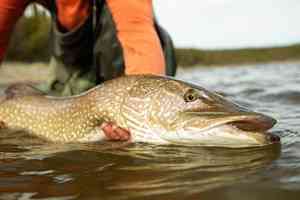
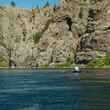
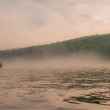

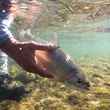


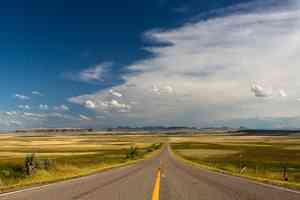


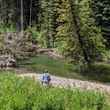
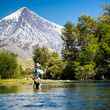
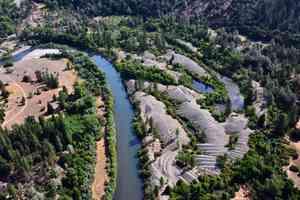
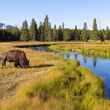
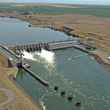
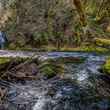
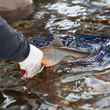
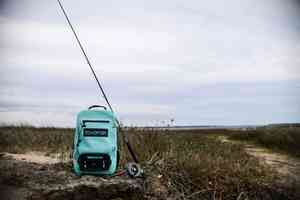
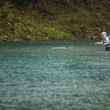
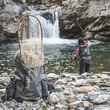
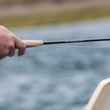
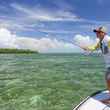




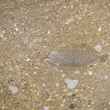


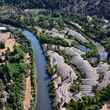

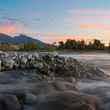
Comments
Craig replied on Permalink
Where is the author from? Guy from east coast talking about ecosystems and environmental dynamics he hasn’t lived in? This is why the wrong wolves were put up in our neck of the woods.
You have to go back to mid 80’s to understand high mountain lakes. Look at Crane Prairie in a blue state. Look at same algae blooms going back that far.
It’s sad that politics are being brought into a tremendous fishery on a very small sample size (5-7 years in article). From people that aren’t from where that are writing about.
Chad Shmukler replied on Permalink
Craig replied on Permalink
Let’s just keep deleting the comments from people that are out west that follow the narrative. Snap shot conversation without significant data extending 50 years.
Chad Shmukler replied on Permalink
Craig replied on Permalink
If not deleted like other comments… where is this from…
If you have discovered that part of the west which consists of the three state border areas of Montana, Wyoming, and Idaho, there is one thing for sure, this wonderland of our coun try will enrich your outlook on life and recall you to its forests and streams year after year. Nowhere within the average American sportsman's reach is there a country that offers more grandeur, scenic wonders and beauty, such numbers of un-polluted cold running streams with wild trout populations, clear, fresh, pine scented air, and a people that always have a smile to offer and an even bigger warm welcome.
It is little wonder that each season brings more of us to this land to draw upon its wealth of natural outdoor wonders, especially since civilized life grows more hectic and our city air, land, and waters are fouled by man's waste and careless ways.
A few days lost from the ugly headlines and broadcasts of world problems, the rat race of the office, the freeways, and the bill collectors; lost for precious hours and days on the trout streams that sing songs to you as you wander along their timeless courses rebuilding tired, strained nerves and muscles back to their best. We seek this magic tonic more than ever, for more than ever it is needed.
Cherish with me this area and determine yourself not to scar, destroy, or kill its life. We can use such a magnificent natural heritage yet not harm it if we only take the time to be careful with our trust. Ask what you can give of yourself to improve and protect. Don't always be a taker, be a giver of your sport and the losses of excess usage will reverse for us.
Craig replied on Permalink
Narrative of conversation can’t be 7 years. Extend the narrative then start an article, and conversation with real data.
Algae is not uncommon. Has been around for a long time. Look to blue states that have it as well. Look at Crane and other high mountain lakes across WA and OR. Go back to the 80’s then the narrative can start.
Rich replied on Permalink
So what is this article trying to say? The earth is warming and…..
The health department and environmental safety department is supposed tell us what ?
Don’t go there?
Pointless drivel that aids nothing. You and I ain’t changing the weather. Get over yourself.
Pages